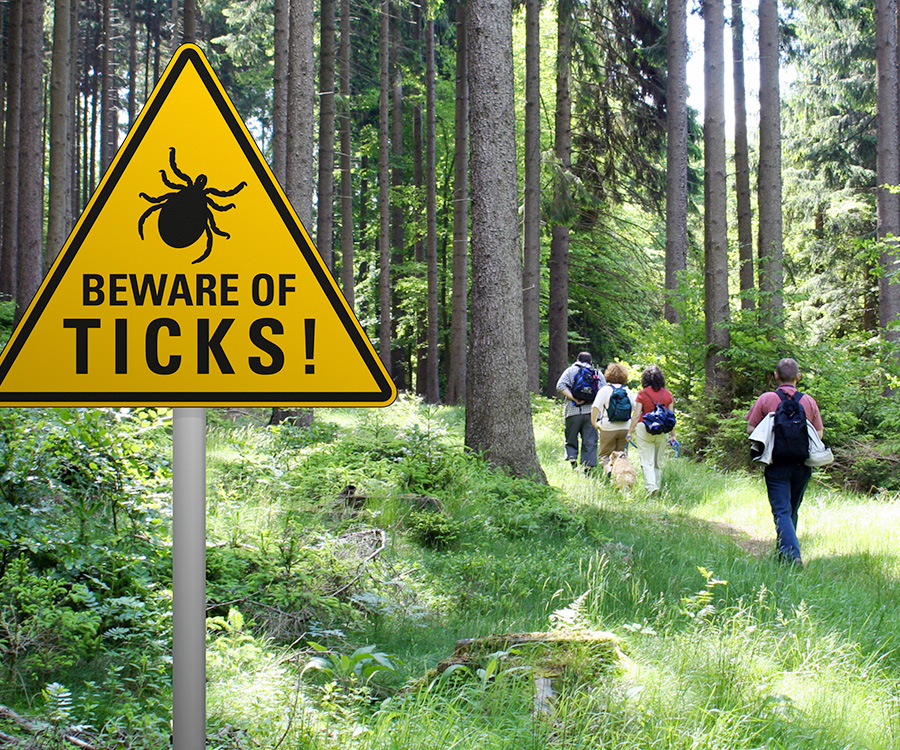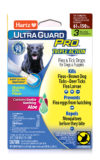Can My Dog Get Lyme Disease?
This common tick-borne illness can also affect your pup. Know the signs and keep your best friend happy and healthy.

If you spend any time outdoors, make sure to protect yourselves and your pup from Lyme Disease.
Lyme Disease is probably the most well-known tick-borne illness, for good reason: Carried by the black-legged tick (also known as a deer tick), more than 200,000 cases of the disease are reported each year across the United States. Outdoorsy types are always on high alert to protect themselves from Lyme Disease – but what about their pets? As it turns out, dogs can also contract Lyme Disease and it can be a serious medical concern when they do.
Get informed so you can care for your pet best. Let’s take a look at what Lyme Disease is, its symptoms in dogs, and how you can protect them in the future.
What is Lyme Disease?
Lyme Disease is an infectious disease caused by the bacterium Borrelia burgdorferi and transmitted by certain kinds of ticks. Ticks are found in grassy or wooded areas, hitching a ride on passing animals as they step through branches, leaves, and shrubbery. Ticks will embed themselves on a host and stay there for up to 48 hours, only dropping off after they have had their fill of the host’s blood. It’s during this feeding process that a tick may transmit Lyme Disease.
In humans, Lyme is often identified by a telltale, target-shaped rash that appears at the site of a tick bite. Symptoms commonly include fever, fatigue, and achiness, but can develop into a range of other systemic symptoms. Despite being a pretty common illness, there are still a lot of questions surrounding Lyme Disease symptoms and treatments, especially when it comes to its more adverse, late-stage effects.
What are the Symptoms in Dogs?
Dogs, like humans, contract Lyme Disease through the bite of an infected tick. Thankfully, Lyme produces symptoms in dogs just 10 percent of the time. When symptoms do manifest in dogs, the most common are lethargy and inflamed joints, which can develop into arthritis if left untreated.

Ticks will embed themselves on a host and stay there for up to 48 hours
Other symptoms can include:
- Arched back
- Altered, stiff walk
- Sensitivity to touch
- Labored breathing
- Reduced appetite
- Fever
- Swollen lymph nodes
Rarely, serious heart and nervous system complications may occur. Kidney issues can also develop, and in severe cases may result in life-threatening kidney failure.
Diagnosing + Treating Lyme
Because of the range of symptoms Lyme Disease can bring about, blood tests are usually necessary to gain a solid diagnosis. Dogs with joint- and movement-related symptoms may also have X-rays done, or have fluid removed from afflicted joints for testing.

Avoid Lyme Disease by checking yourself and your dog if you've been in an area with ticks.
A significant challenge veterinarians face when diagnosing Lyme Disease is distinguishing it from other arthritic or systemic conditions, sometimes resulting in long periods of testing. If your dog exhibits any of the symptoms described above, and you have recently been in an area where ticks are prevalent, let your vet know – it could speed up this process significantly.
The good news: Lyme Disease can be treated easily with antibiotics, typically Doxycycline or Amoxicillin, and most dogs respond well to this treatment.
Keeping Your Dog Lyme-Free
Avoiding Lyme Disease begins with vigilance. Adult ticks are small and easy to miss, and Lyme Disease can also be carried by tick nymphs, which are even smaller – about the size of a poppy seed. If you’ve taken your dog out into an area that has ticks, make an effort to check them (and yourself) for critters. The best case is if you catch them before they embed at all, but it’s more likely that they will be found while feeding since they become swollen and easier to spot. Remember to remove any embedded ticks safely to reduce the risk of infection.

















